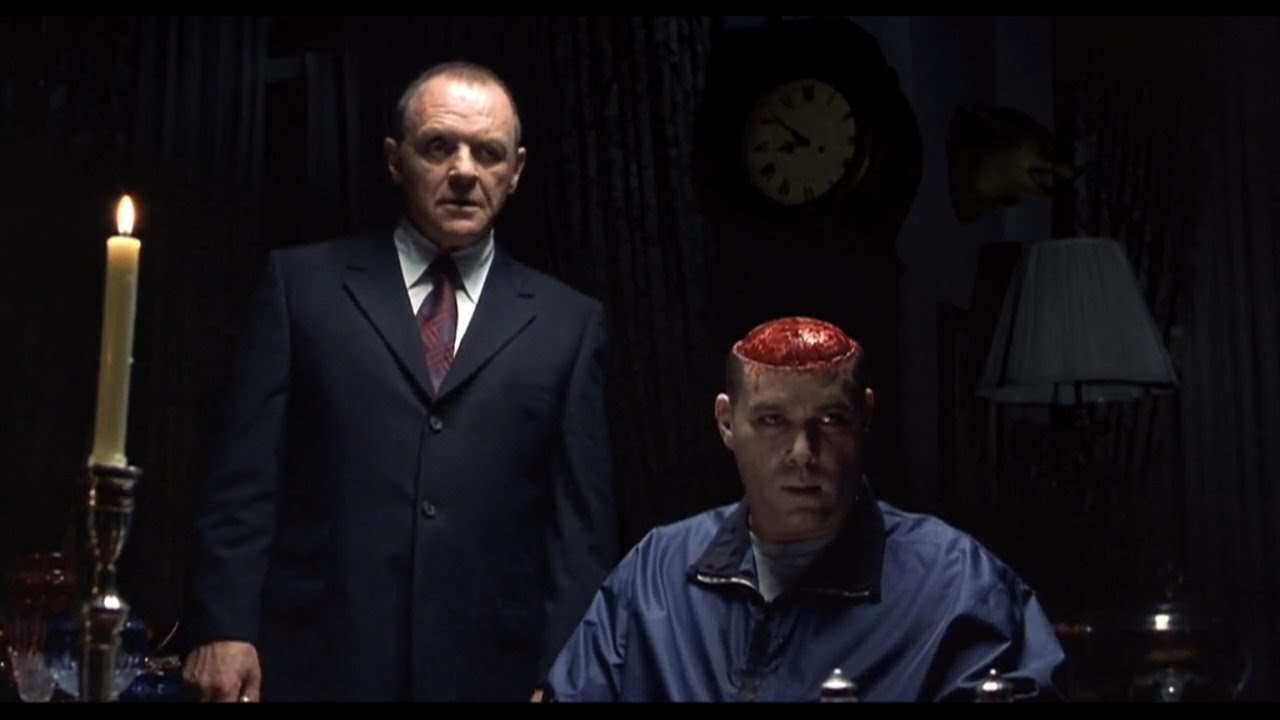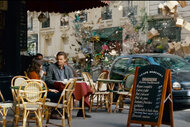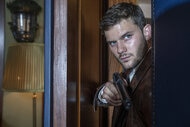Create a free profile to get unlimited access to exclusive videos, sweepstakes, and more!
Remember That Time Hannibal Ate Ray Liotta's Brain?
Mmmm, brains!

“It was really outrageous. It was, obviously, pretty far-fetched stuff. But we actually had a wonderful time shooting it.”
The “it” Julianne Moore speaks of is the infamous “brain-eating” scene from Hannibal (now streaming on Peacock), Ridley Scott’s much-hyped 2001 sequel to director Jonathan Demme’s The Silence of the Lambs (also streaming on Peacock). Moore took over the role of FBI Agent Clarice Starling from Jodie Foster, and found herself seated at the table of Hannibal Lecter (Oscar-winner Sir Anthony Hopkins) as the cunning cannibal made Clarice’s colleague and former lover, the misogynistic Paul Krendler (Ray Liotta), his next victim.
Drugged and recovering from a recent gunshot wound, Clarice helplessly watches as Lecter serves Paul his own brain while Paul is (gulp) still alive. When the film was released in 2001, Hannibal’s climactic scene captivated and repulsed audiences in equal measure — just like it did in Thomas Harris’ 1999 original novel. With Hannibal now streaming on Peacok, we’re serving up a delectable dive into how the filmmakers pulled off this gruesome sequence: a near-seamless blend of three different visual effects that has aged like a bottle of good Chianti.
How Ridley Scott's Hannibal Served Up Ray Liotta's Brains
While audiences and critics alike argued that its inclusion in Hannibal was over the top, the dinner scene is arguably what the movie is best remembered for. (Within the movie itself that is, since the Moore-Foster casting swap dominated the news and entertainment trades at the time — as did the late Demme’s departure from the project). What Demme deemed as “too lurid and gory” in regards to the source material proved to be the exact opposite for Scott’s taste (no pun intended).
Krendler’s unsettling demise was one of many incredulous scenes from Harris’ source material that carried over into its big-screen adaptation, with the author rumored to have intentionally included it and other lurid flourishes in response to years of being hounded by Lambs and Hannibal producer Dino De Laurentis to write a sequel. The scene was perhaps Harris’ way to say “just try and adapt this, Hollywood” — a challenge for which Scott and his make-up and visual effects experts were more than game.
“It seemed to be an incredibly complicated sequence, a literally terrifying one, that had to be done,” special make-up effects designer Keith Vanderlaan recalled during a 2001 making-of feature on the Hannibal DVD. In concert with visual effects house The Mill, which would handle some of the CG work the scene required, Vanderlaan and lead make-up effects artist Greg Cannom helped create a full-body animatronic puppet of Krendler. They took a body cast of Liotta and rigged the face and neck of the puppet to be fully interactive. That meant the incredibly life-like puppet could blink, open its mouth, and move its head to match the movements of the real-life actor on set.
From there, the puppet and Liotta were outfitted with a removable skull cap. On Liotta, the cap would conceal a partial helmet covered in greenscreen that would allow for the puppet’s “brains” to be composited in later as a computer effect.
“Scott was open to hearing what the benefits would be to us using a make-up effect, or building an animatronic effect, in place of using a real actor,” Vanderlaan said.
When it came to making the brains to be used on set, Vanderlaan and his team went all-out.
“We had animal brains in there and created a fluid sack containing blood,” Vanderlaan explained. “So, when cut into, [the sack]’s fluids would run." The sequence, according to Vanderlaan, was obviously a demanding one. “There was no margin for error.”
The effects teams’ effort paid off, both in terms of shock factor and verisimilitude.
“In that scene,” Ridley Scott recalled on the 2001 special features, “there are actually two or three shots that are actually the [puppet] and not [Liotta]. You can’t tell the difference.”
Scott seems very proud, if not downright giddy, to have pulled off the scene that Hannibal’s own author doubted could be done. Scott’s film is a bloody marriage between B-movie scares and opulent melodrama. It is an R-rated soap opera-turned-blood bath, starring two of the greatest and most compelling characters ever adapted for the big screen — albeit reduced to their most absurd, two-dimensional, slasher film-worthy parts.
On paper, it sounds like it could make for an interesting approach to the material, but these choices repel and repulse more than they connect and resonate. Scott, working from a script written by David Mamet and Oscar-winner Steven Zaillian (Schindler’s List), seemingly operates with a fierce fidelity to the tone of the book as opposed to using the disturbing text as a jumping-off point. Contrast that with Silence of the Lambs, which turned the original novel’s macabre horrors into more of a dramatic character study — a choice that helped make it an Oscar-winning classic.
At the same time, the terrifying sight of Krendler unwittingly being fed his own frontal lobe is a perfect encapsulation of Hannibal’s intentionally over-the-top aims. This may account for why it is often the first thing audiences recall when reflecting on the sequel.
The scene also succeeds as a statement about the then-future of visual effects in movies. Two decades later, Krendler’s “last meal” makes a compelling argument that filmmakers would be wise to use computer graphics as more of an accessory or tool to augment or embellish — never replace — old-school, analog effects.
“People in my industry, you always hear that CG was gonna eliminate the make-up effects industry and that’s kind of nonsense,” Vanderlaan argued. “I think the merging of the makeup effects, with the puppet, and what The Mill created, more establishes the need for what we did to serve as a basis for the technology… The work we did with the Krendler character, and that puppet on set — in concert with computer-generated effects in post — established [the need for] practicing practical effects with a mix of the tech being used.”
Fava beans and a nice Chianti optional.
Catch both Hannibal and The Silence of the Lambs, both streaming now on Peacock!
Originally published Feb 8, 2021.


























